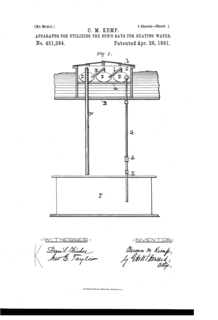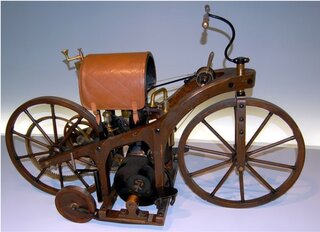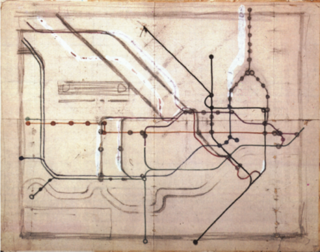
Sir William Robert Grove, a lawyer by training, believed that electricity could become a useful means of locomotion. To that end, he spent much of his time tinkering with new ideas for electric cells.
At the time, it was thought that a metal was needed to generate electricity. In the late 1830s, Grove started to investigate batteries, and developed a novel form of electric cell. In 1842, he eventually developed the first "gas battery," or fuel cell, in which the formation of water from hydrogen and oxygen gas generated electricity. This diagram from a paper published in the same year (Phil. Mag. 1842, 417) shows a series of glass tubes filled with hydrogen and oxygen, connected by platinum electrodes. The closed system created an electric current purely from the enclosed gases.
His invention, originally dubbed the "Gas Battery," was the first fuel cell ever created. But its development required many experiments and built upon ideas of other members of the scientific community of the 19th century.
Today, it is a critical technology offering several benefits over conventional combustion-based technologies: Higher efficiency (capable of exceeding 60% conversion rate), lower or zero emissions, and no air pollutants creating smog.




